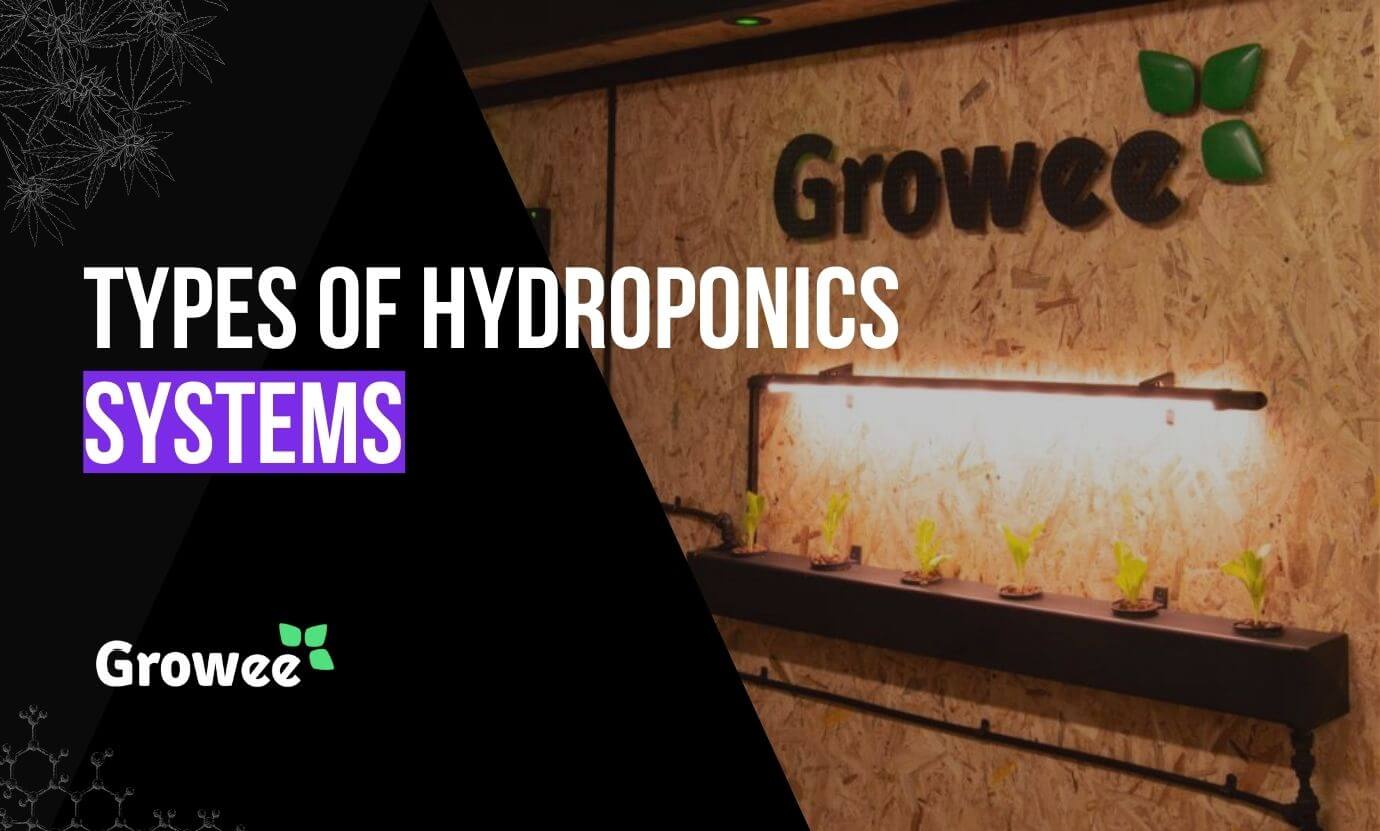Hydroponic systems are an innovative method of growing plants without soil, where the roots of plants are submerged, sprayed, or washed with a nutrient-rich solution that contains all the essential minerals required for growth. The hydroponic technique is becoming increasingly popular, as it offers several advantages over traditional soil-based gardening, including faster growth rates, increased yields, and a reduced risk of pests and diseases.
In this article, we will explore the seven different types of hydroponic systems, their pros and cons, and which system is better for plants. Additionally, we will discuss how to manage the plants feeding automatically in hydroponic systems using Growee.
See How Growee Can Save You Time By Automating Your Plants Feeding
Water pH – Automated pH Up and Down Control
Nutrients Mixing – Automated Nutrient Dosing with Target EC / PPM Control.
Control From Anywhere – WiFi Connection and mobile App
1. Deep Water Culture (DWC)
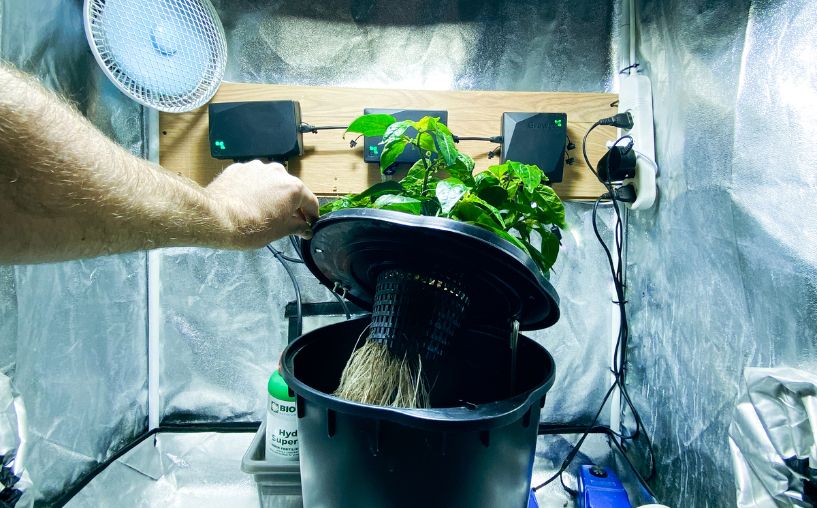
Deep Water Culture (DWC) is one of the simplest hydroponic systems, where the plant roots are suspended in a nutrient-rich solution that is continuously oxygenated. The plants are grown in net pots that are suspended over the nutrient solution, allowing the roots to hang down and absorb the nutrients.
Pros: DWC is easy to set up, low cost, and requires minimal maintenance. It is ideal for growing leafy greens, such as lettuce and spinach, and herbs like basil and parsley.
Cons: DWC is unsuitable for large plants, and the roots need to be monitored for diseases and root rot.
2. Recirculating Deep Water Culture (RWC)
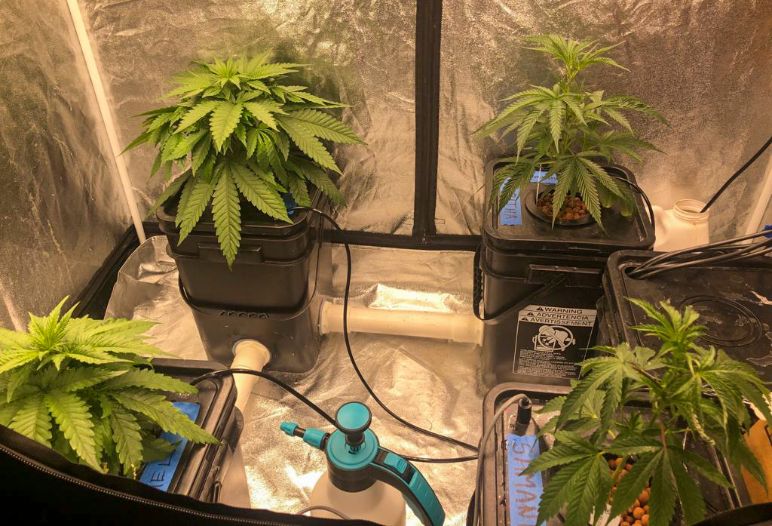
Recirculating Deep Water Culture (RWC) is similar to DWC, except that the nutrient solution is recirculated through the system. The water is pumped from the reservoir to the plants and then back to the reservoir, reducing waste and water consumption.
Pros: RWC is easy to set up, low cost, and requires minimal maintenance. It is ideal for growing leafy greens, such as lettuce and spinach, and herbs like basil and parsley.
Cons: RWC is unsuitable for large plants, and the roots need to be monitored for diseases and rot.
3. Nutrient Film Technique (NFT)

The Nutrient Film Technique (NFT) is a hydroponic system that involves a shallow tray or channel that is continuously flooded with a nutrient-rich solution. The plants are grown in net pots placed in the tray, allowing the roots to dangle in the solution.
Pros: NFT is ideal for growing small, fast-growing plants like lettuce, basil, and strawberries. It is also highly water-efficient, as the nutrient solution is recirculated through the system.
Cons: NFT requires a pump and timer to maintain water flow, and the plants need to be monitored for root rot.
4. Ebb and Flow
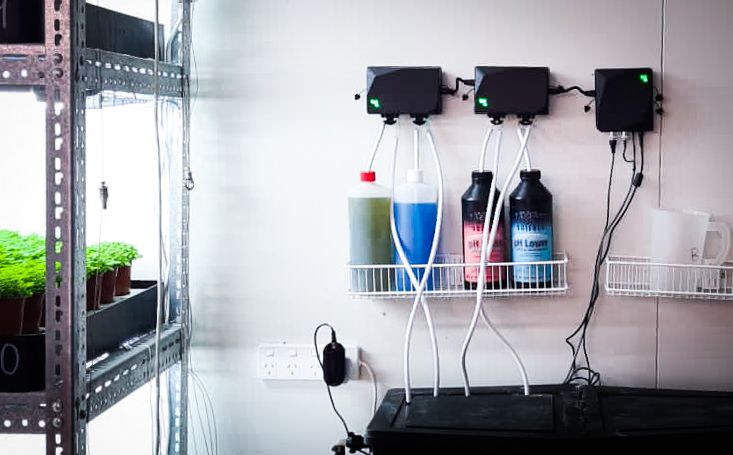
Ebb and Flow is a hydroponic system where the plants are grown in a tray or container filled with a growing medium like perlite or coconut coir. The tray is periodically flooded with a nutrient-rich solution and then drained back into the reservoir.
Pros: Ebb and Flow is ideal for growing larger plants like tomatoes and cucumbers. It is also highly customizable, as the size and shape of the tray can be adjusted to fit different plants.
Cons: Ebb and Flow requires a pump and timer to maintain water flow, and the plants need to be monitored for root rot.
5. Drip Irrigation
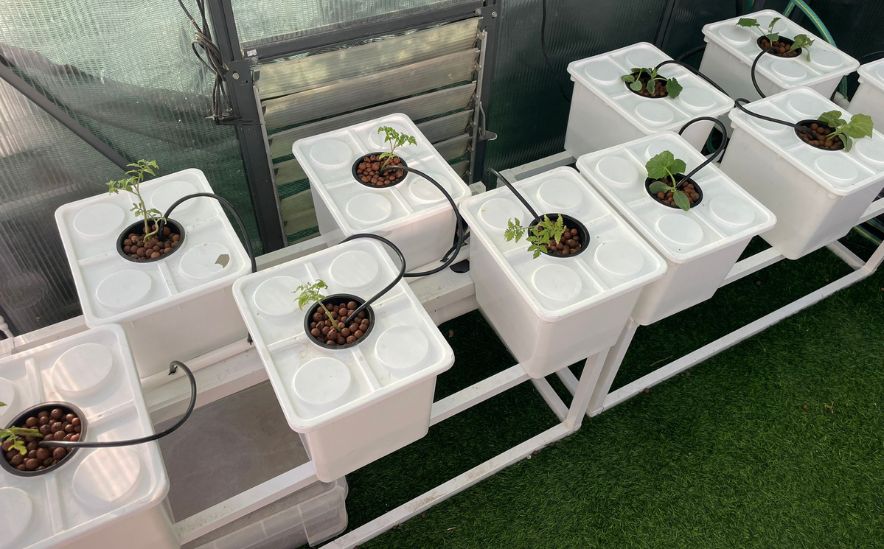
Drip Irrigation is a hydroponic system where the plants are grown in a growing medium like coco coir or rockwool. The nutrient-rich solution is pumped from a reservoir and dripped onto the growing medium, allowing the plants to absorb the nutrients.
Pros: Drip Irrigation is highly customizable and can be used to grow various plants, from tiny herbs to large tomatoes. It is also easy to set up and maintain.
Cons: Drip irrigation can be prone to clogging, which can reduce or block nutrient flow to the plants. In addition, It may not be suitable for plants that require a more continuous flow of nutrients, as the slow drip may not provide enough nutrients for some plants.
6. Aeroponics
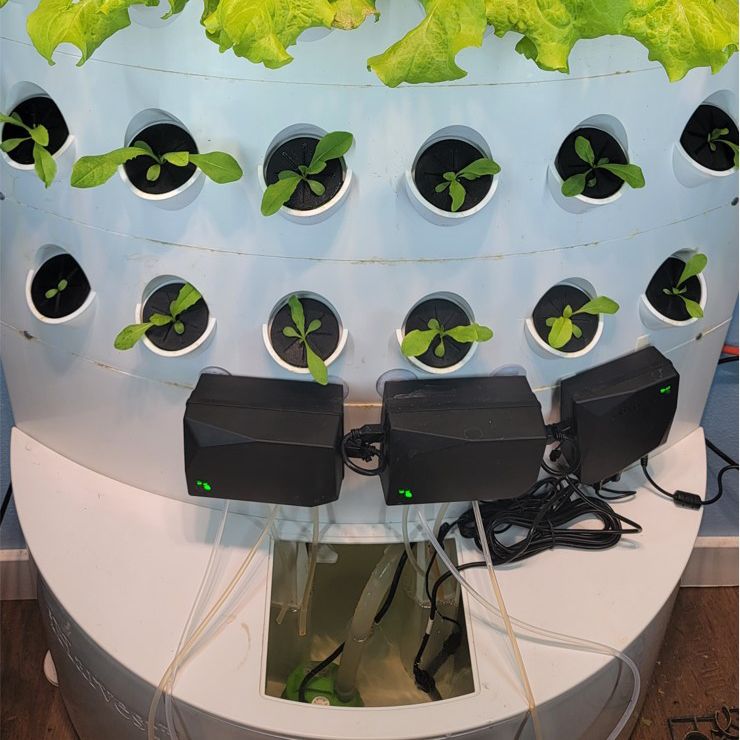
Aeroponics is a hydroponic system where the plants are grown in a chamber with no growing medium. Instead, the roots are suspended in the air and periodically sprayed with a nutrient-rich mist.
Pros: Aeroponics is highly efficient and can produce faster growth rates and higher yields than other hydroponic systems. It also uses less water and nutrients than other systems.
Cons: Aeroponics is a more complex system and requires more maintenance and monitoring. It is also more expensive to set up.
7. Wick System / Batch tank Feeding
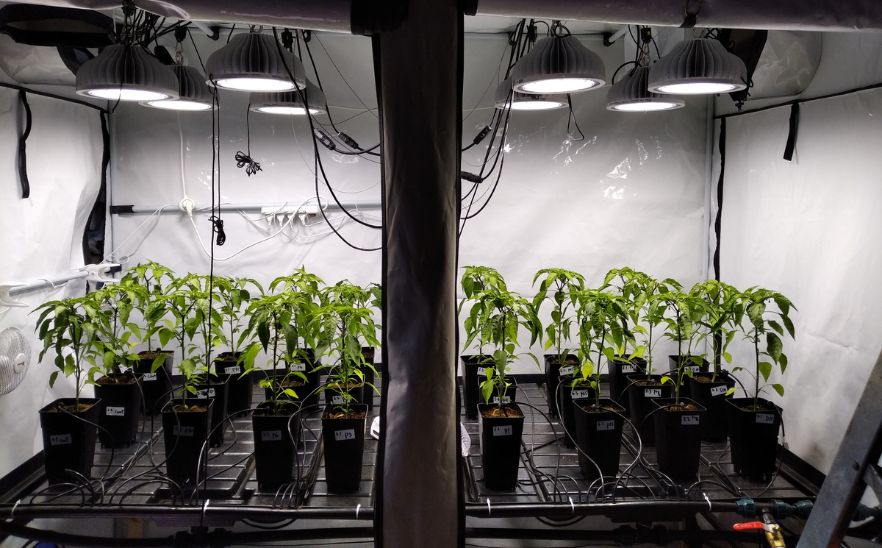
The wick system is the simplest hydroponic system, where the plant roots are suspended in a growing medium like coconut coir or perlite. The nutrient-rich solution is stored in a reservoir and delivered to the plants through a wick.
Pros: The wick system is low cost, easy to set up, and requires minimal maintenance.
Cons: The wick system is not suitable for large plants and can be prone to nutrient deficiencies.
Which hydroponic system is better for plants?
There is no single answer to this question, as each hydroponic system has its advantages and disadvantages. The best system for plants will depend on the type of plant, the size of the growing space, and the experience of the grower. It is essential to research and understand the requirements of each plant and system before deciding on the best option.
Pros and Cons of each hydroponic technique
Each hydroponic technique has its pros and cons, and it is crucial to understand them before deciding which system to use. Deep Water Culture and Recirculating Deep Water Culture are both low cost and require minimal maintenance but are not suitable for large plants. Nutrient Film Technique is highly water-efficient but requires a pump and timer. Ebb and Flow is customizable but requires monitoring for root rot. Drip Irrigation is highly customizable but can be prone to clogging. Aeroponics is highly efficient but more complex and expensive to set up. The wick system is low cost but not suitable for large plants.
How to automatically Manage Plants Feeding in a Hydroponic System Using Growee
Growee is a nutrient delivery system designed specifically to automate hydroponic gardening. It automatically delivers the correct amount of nutrients to the plants, ensuring optimal growth and health. The system can be programmed to deliver nutrients at specific intervals and can be customized for different plants and growing conditions. Growee takes the guesswork out of nutrient delivery, making hydroponic gardening more accessible and more efficient.
Final Words
So there you have it… hydroponic systems offer several advantages over traditional soil-based gardening, including faster growth rates, increased yields, and a reduced risk of pests and diseases. There are several different types of hydroponic systems, each with its advantages and disadvantages. The best system for plants will depend on the type of plant, the size of the growing space, and the experience of the grower. With proper research, planning, and maintenance, hydroponic gardening can be an efficient and rewarding way to grow plants. Growee makes nutrient delivery easy and efficient, ensuring optimal plant growth and health.
FAQ
What is the difference between a circulation hydroponic system and a drain-to-waste?
A circulation hydroponic system recirculates nutrient-rich water through the system, while a drain-to-waste system pumps fresh water and nutrients into the system and disposes of the runoff. Circulation systems are more sustainable and cost-effective, but require regular monitoring to ensure nutrient levels remain balanced.
What is the most common type of hydroponic system?
The most common type of hydroponic system is the deep water culture system, which involves suspending plants in a nutrient-rich solution. It’s easy to set up and maintain, making it a popular choice for beginners.
What is a hydroponic growing system?
A hydroponic growing system is a method of growing plants without soil, using a nutrient-rich solution to deliver the essential minerals required for plant growth. Hydroponic systems can be used to grow a wide range of plants, including vegetables, herbs, and flowers, and offer several advantages over traditional soil-based gardening.
Can I use Growee for circulation in a hydroponic system?
Yes, Growee can be used for circulation hydroponic systems. It’s designed to automatically feed plants with the right amount of nutrients and water, ensuring they receive everything they need to thrive. Just make sure to follow the instructions carefully and adjust the settings based on your specific system and plants.

